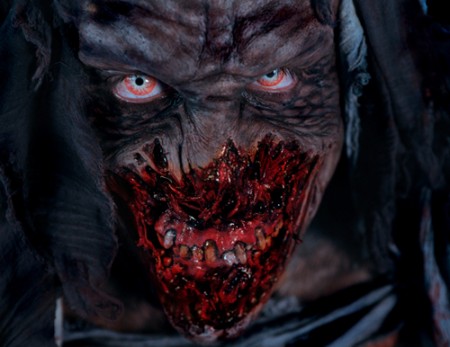It can be said that sex offenders are the new bogeymen, mythical monsters invented to scare children into social order. People convicted of sex offenses, and subsequently placed on the public registry, are transformed into a concept of evil, which is then personified as a group of faceless, terrifying, and predatory devils. It would appear that this strategy is used to keep sex offenders at a distance, in turn keeping our children and families safe from harm. But in reality, such fantasy does just the opposite: ignoring the realities of sex offenses puts children, families, and adults at greater risk.
Halloween is a notable time to talk about sex offenders and the issues surrounding such labeling, as they conjure both legal realities and Jungian fantasy. Many cities and counties have enacted special laws that dictate what sex offenders are allowed to do and where they are allowed to be on Halloween, publicizing their identities and putting them at risk of harassment or worse. On a deeper level, Halloween enhances cultural fear, paranoia, and panic–a bad combination for sex offenders. Why have sex offenders become our “bogeymen,” and why is this counterproductive?
The concept of the bogeyman has been around for centuries, with variations around the world. He is faceless, vague, and cloaked, yet undeniably terrifying. Parents instill the idea of the bogeyman in the minds of children to make them behave, or avoid dangerous situations. The sick beauty of the bogeyman is that he exists only in the mind, with every person imagining a different manifestation of the mythical figure. He is a projection of your worst fears, your scariest nightmares, and your most crippling anxieties.
The bogeyman is central to Halloween. The holiday is rooted in Christian tradition and folklore, and dates back for centuries in Europe. Halloween in the United States began in the 19th century with the Irish and Scottish migration. Jack-o-lanterns frighten evil spirits, trick-or-treating uses threats to get sweets, and costumes mock satanic figures. Halloween has evolved into a cathartic holiday that celebrates fear, indulges in horror, and helps us exercise our imagination. The personification of this fear takes many forms–witches, killers, vampires–but the central concept remains the same. Some fears are too scary to take such specific forms, and the result is the vaguely terrifying bogeyman.
The legendary 1978 film Halloween puts this character front and center, stalking and terrifying Jamie Lee Curtis (and thereby generations of viewers) as a tall, masked man. As recently as this year, Universal Studios’ Halloween Horror Nights includes a maze of terror called “El Cucuy”, based on the embodiment of the Mexican bogeyman figure who has sharp teeth and knife-like nails. Clearly, this is a mythology that sticks with people, that creates a visceral reaction, and still incites fear in even the most savvy Halloween consumer.
American culture is steeped in moral panics. Puritanical witch-hunts, racial persecution, xenophobic internment, and institutionalization of gay men are all examples of misplaced solutions to deeply engrained cultural fears of difference. In the mid-1960s the concept of “stranger danger” came into prominence, dissuading children from interacting with unknown adults and feeding dormant fears of otherness. Adult males with an inexplicable interest in talking to children were specific targets of stranger danger, resulting in a new, vague bogeyman archetype. Comedic by contemporary standards, educational films were created and propagated in schools to make sure every child understood that adult men were not to be trusted–guilty until proven innocent, bad until proven good.
Over decades this archetype has grown, been fostered, and gained steam. It is deeply ingrained in the way families view the outside world. In the 1980s, this bogeyman, the one who bribes children with candy, took on a new, more specific form. Sex offenders were selected as the realization of moral panics about sex, stranger danger, and national paranoia. Over time, Americans have become well accustomed to the sex offender bogeyman. Despite any statistics, data, or examples that prove otherwise (low re-offense rates of 2-5%, the majority of child sexual abuse being enacted by a family member or trusted friend), we believe that sex offenders prove a serious threat to children and families. They remain dormant, anonymous, in our neighborhoods, just waiting for the right time to strike. Public online registries were created to satiate our appetite for sex offenders, to indulge in our darkest fears, and inspect all the bogeymen that haunt our fantasies.
This is all sounding very Halloween, isn’t it? Today, these fears are transformed and realized to target sex offenders. For years cities and jurisdictions have enacted special ordinances that dictate the actions of sex offenders on Halloween. In general, these laws order offenders to keep their lights off on Halloween night, obey a 12-hour curfew, refrain from giving out candy to trick-or-treaters or decorating their houses, put signs up on their doors that say “No trick-or-treating at this residence,” or rounding up transient offenders at the local parole office for the night. Since 1994, California has put its own twist on the event by naming it “Operation Boo.” Parole and probation officers do random house checks to make sure offenders are compliant with the Halloween regulations, and if not, parole violations and further jail time are a distinct possibility.
The reality is that there has never been a recorded case of abuse or abduction by a registered sex offender on Halloween. Most offenders already comply with strict parole and registration requirements, and many are constantly tracked with GPS monitors. A large number of registrants who are forced to comply with Halloween restrictions have never been charged with offenses against children.
The consequences of such ordinances are grave. Parole violations, recidivism, vigilante justice, and even suicide are very real threats that offenders face. One offender in a therapy group that I facilitated was cited as violating parole during Operation Boo for having kids clothing in a suitcase deep in his home, which he claimed belonged to his wife who has children. This violates his parole and resulted in 30 days of jail time. Last year, a Napa County man hung himself with a bed sheet in his jail cell the day after he was arrested for possession of a knife during a Halloween sweep. Furthermore, being listed on the Megan’s Law public registry puts an offender’s life at risk, as there have been multiple vigilante murders of offenders, as well as spouses. Increased visibility of offender status such as those mandated by Halloween ordinances strengthens the likelihood of harassment, violence, or worse. In an effort to keep kids safe, despite no concrete danger, sex offenders are confronted with life-or-death situations, potentially resulting in tragedy for them and their loved ones.
Luckily, there have been some legal victories over these laws. This past month the group California Reform Sex Offender Laws successfully won a legal battle to repeal the ordinance in the city of Orange that forced offenders to place signs on their doors. Last year, the same organization barred the city of Simi Valley from enacting a similar Halloween ordinance. Despite these legal wins, public perception of a serious threat of sex offenders on Halloween remains largely in place.
If Halloween is a day to celebrate and indulge in fear, terror, death, and dark fantasy, then it makes sense that sex offenders would be the perfect real-life embodiment of such fears. Make no mistake, I think that Halloween’s dark indulgence is healthy, fun, and can be a cathartic relief of repressed fears. The problem arises when fantasy blurs with reality, when the Halloween fright begins to inform the very real lives of sex offenders and anyone else deemed different, othered, or threatening. The bogeymen of our fantasies is exorcised through transmutation into the real world. But what happens when our fears inform our realities, when anxiety writes laws?







